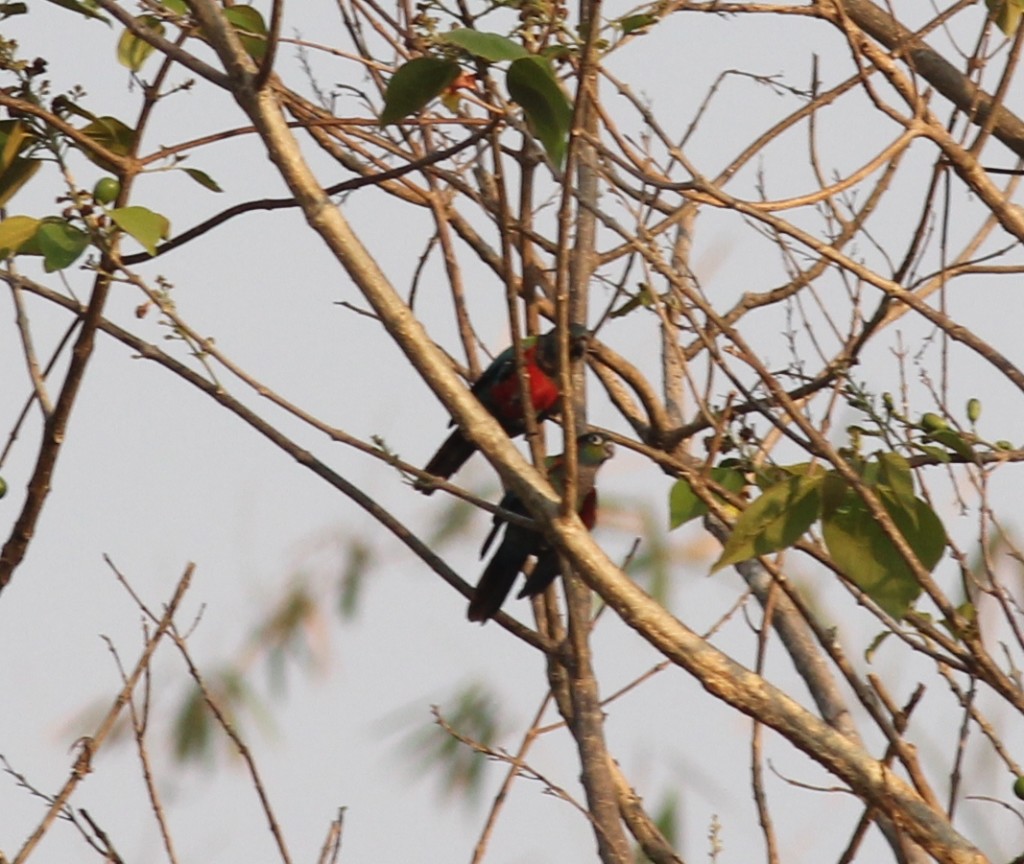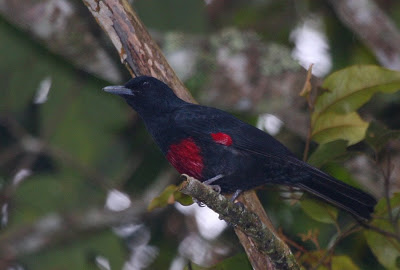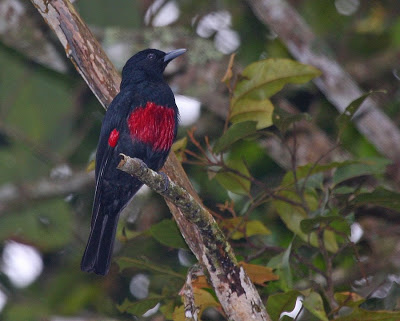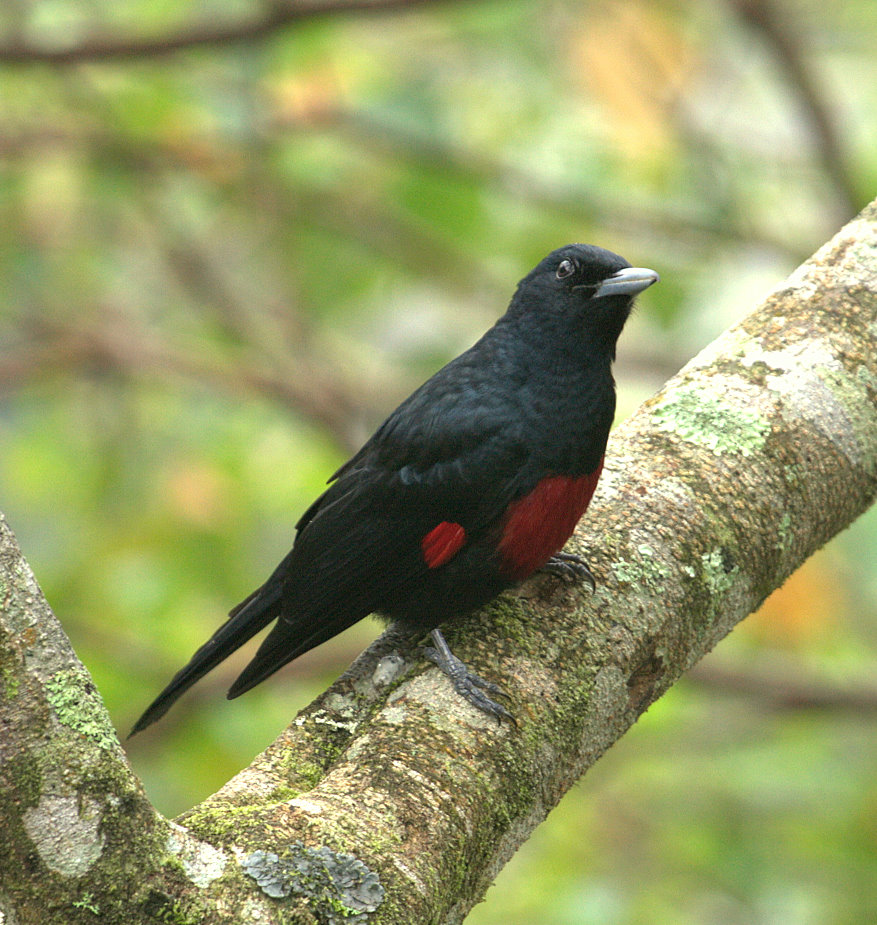
Oriolus cruentus
TAXONOMY
Leptopteryx cruenta Wagler, 1827, Java. Four subspecies, one
each in four regions of accurrence.
OTHER COMMON NAMES
English: Black-and-crimson oriole; French: Loriot ensanglantй;
German: Rotbrustpirol; Spanish: Oropйndola de Pecho Rojo.
PHYSICAL CHARACTERISTICS
8.5–9 in (21.5–23 cm); no weights available. A dusky, graybilled
oriole with crimson or chestnut lower breast and belly
and mark in wing.
DISTRIBUTION
Greater Sunda Land: Malay Peninsula, Sumatra, Java, and
north Borneo.
HABITAT
Closed, primarily high montane rainforests above 3,300 ft
(1,000 m).
BEHAVIOR
Retiring and sedentary, working locally through the inner
forest canopy and forest midstage singly or in pairs, although
foraging out into cloud forest at high altitudes. Song is a
short, mewing, nasal warble of about four syllables, repeated
at intervals.
FEEDING ECOLOGY AND DIET
Little known, though hops about actively when foraging and
often descends to logs in forest substage. Eats small soft fruits
such as figs and berries, and takes a wide range of insects including
termites, diverse larvae, and particularly caterpillars,
both hairless and haired.
REPRODUCTIVE BIOLOGY
Insufficiently known.
CONSERVATION STATUS
None of the four mountain island populations appear to be under
threat at present, although accelerating habitat destruction
could impact them in the future.
SIGNIFICANCE TO HUMANS
None known.
Other popular Animals
Photo Gallery of - Crimson-bellied oriole



 Animalia Life
Animalia Life